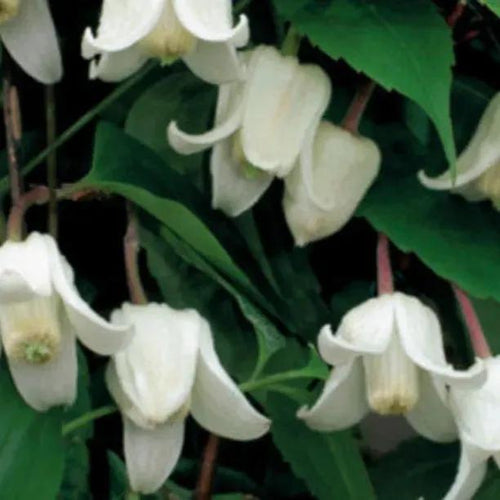Winter Beauty Evergreen Clematis
'Winter Beauty Evergreen Clematis' a welcome distraction in the winter months, the distinctive white flowers, shaped like bells, appear around January and, on a good year, perhaps a month either side. The shiny evergreen foliage looks great in winter as long as it isn't hit by frost. It's relatively compact, reaching about 3-4 metres tall and wide.
Browse our range of Clematis, or all our climbing plants.
Features
- Flower colour: White
- Flower shape: Bell
- Fragrance: Strong
- Repeating: No
- Evergreen
- Flowering season: December-February
- Final height and spread: 4m x 4m
- Pruning group: 1
- Hardiness H3: too tender for the North
- Type: Evergreen Winter-Flowering
Growing 'Winter Beauty' Clematis
This variety has an RHS hardiness rating of H3, which strictly means prolonged winter temperatures below -5C should be too much for it, but it's a touch hardier than that and should only experience some damage if night-time temperatures consistently dip that low, especially if it's growing on a sheltered wall against the house. Covering it with fleece at the peak of midwinter cold (which is also when it flowers!) to keep the frost off at night will make a big difference. Its manageable size is ideal for unheated greenhouses, or it could be grown in a pot and moved to a suitable microclimate, usually right beside the house, during winter.
Clematis perform best with in deep, rich soil where the soil is shaded and the vines grow into full sun, but partial shade is fine: the warmer your location, the more shade they'll cope with, and we have a friend whose 'Winter Beauty' is doing well on a North-facing wall near Dartmoor. Unlike most clematis, 'Winter Beauty' prefers its soil on the dry-ish side because constant moisture may cause disease, and it doesn't mind mildly acidic soil either (alkaline is still best, though). It's happy in sheltered coastal conditions.
Garden Design Ideas
Bring interest to the garden at the lowest point of the year by pairing with other winter eye-catchers, such as cornus, willows, snowdrops and hellebores.
History & Trivia
The species is Japanese, and one especially fine specimen was chosen to clone for commercial production in 2002, named by Wim Snoeijer at Jan van Zoest Nursery in Holland, which specialises in Clematis.
Images supplied by Clematis on the Web.

 Secure, One-Tap Checkout
Secure, One-Tap Checkout
 Hand Picked, Delivered to Your Door!
Hand Picked, Delivered to Your Door! 1 Year Bareroot Guarantee
1 Year Bareroot Guarantee


